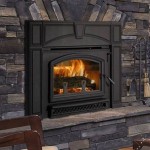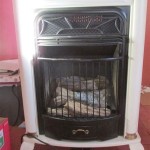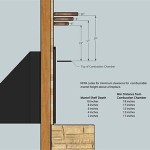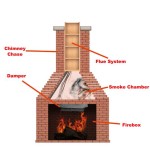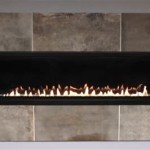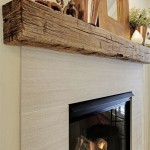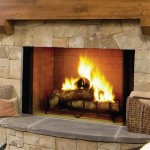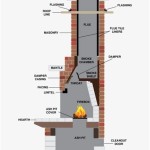Can You Paint A Brick Fireplace: A Comprehensive Guide
Painting a brick fireplace can dramatically alter the aesthetic of a room, transforming a dated or unattractive feature into a focal point that complements the overall décor. Whether aiming for a modern, minimalist look or a cozy, rustic feel, paint offers a versatile solution. However, the process involves careful preparation, selection of appropriate materials, and a methodical approach to ensure a durable and visually appealing finish. This article provides a detailed guide outlining the steps required to successfully paint a brick fireplace, addressing potential challenges and offering solutions for achieving professional-looking results.
Before embarking on this project, it's crucial to assess the condition of the brick. Cracks, loose mortar, or excessive soot buildup can compromise the integrity of the paint job. Addressing these issues beforehand will prevent future problems and ensure the paint adheres properly. Furthermore, consider the existing style of the room. Selecting a paint color that harmonizes with the surrounding elements will create a cohesive and visually pleasing space.
Preparing the Brick Surface
The initial step involves thoroughly cleaning the brick to remove any dirt, soot, grease, or efflorescence. Efflorescence, a white, powdery substance, is a salt deposit that can interfere with paint adhesion. Start by using a stiff-bristled brush and a solution of trisodium phosphate (TSP) mixed with water, following the manufacturer's instructions. Wear gloves and eye protection when working with TSP, as it is a strong chemical. Scrub the brick surface vigorously to loosen any debris. For stubborn stains, a specialized brick cleaner may be necessary. Allow the cleaned brick to dry completely – ideally for 24 to 48 hours – before proceeding.
Once the brick is dry, inspect it for any cracks or loose mortar. Use a crack filler or mortar patch compound to repair these imperfections, following the product instructions. Allow the repair material to cure completely before sanding it smooth with fine-grit sandpaper. This ensures a level surface for painting and prevents the imperfections from being visible through the paint. Remove any sanding dust with a tack cloth to ensure proper paint adhesion.
Consider the texture of the brick. Unsealed brick is porous and will absorb paint readily. If a smoother finish is desired, applying a brick primer can help to fill in some of the pores and create a more uniform surface. This is particularly important if using a lighter paint color, as the dark brick can sometimes show through if not properly primed.
Protect the surrounding areas by taping off the walls, floor, and any adjacent surfaces with painter's tape. Use drop cloths to cover the floor and furniture, preventing paint splatters and drips. Proper preparation is essential for achieving a professional-looking result and minimizing cleanup time.
Selecting the Right Paint and Primer
Choosing the appropriate paint and primer is crucial for a successful and long-lasting finish. Latex paints are generally recommended for brick fireplaces due to their durability, flexibility, and ease of cleaning. They also allow the brick to breathe, which is important for preventing moisture buildup. Avoid using oil-based paints, as they can trap moisture and eventually cause the paint to peel or blister. Select a high-quality paint specifically formulated for masonry surfaces, as these paints are designed to withstand the unique challenges of brick, such as expansion and contraction due to temperature fluctuations.
Before applying the paint, apply a coat of masonry primer. The primer serves several important functions: it seals the brick surface, promotes paint adhesion, and helps to prevent the paint from being absorbed unevenly. Choose a primer that is compatible with the paint you will be using. Tinting the primer to a similar color as the paint can also improve coverage and reduce the number of paint coats required.
Consider the sheen of the paint. Flat or matte finishes are often preferred for a more rustic or traditional look, while semi-gloss or gloss finishes offer greater durability and ease of cleaning, making them suitable for high-traffic areas or for those who prefer a more modern aesthetic. However, higher-sheen paints can also highlight any imperfections in the brick surface, so proper preparation is essential.
Ultimately, the choice of paint and primer depends on personal preference and the desired aesthetic. Research different brands and products, read reviews, and consider purchasing sample sizes to test the colors and finishes before committing to a larger quantity.
The Painting Process and Techniques
Once the brick is properly prepared and the appropriate paint and primer have been selected, the painting process can begin. Start by applying a coat of primer using a brush, roller, or sprayer. Pay close attention to the mortar joints, ensuring that they are thoroughly coated. If using a brush, use a stippling motion to work the primer into the crevices and ensure even coverage. If using a roller, choose a roller with a nap that is appropriate for the texture of the brick. For rougher brick, a thicker nap will be necessary to reach into all the nooks and crannies. If using a sprayer, follow the manufacturer's instructions for proper application techniques.
Allow the primer to dry completely according to the manufacturer's instructions before applying the paint. Once the primer is dry, apply the first coat of paint using the same method. Again, pay close attention to the mortar joints and ensure even coverage. Allow the first coat of paint to dry completely before applying a second coat. Two coats of paint are typically necessary to achieve full coverage and a durable finish. However, depending on the color and opacity of the paint, a third coat may be required.
For a more textured finish, consider using a dry-brushing technique. This involves dipping the brush into the paint, wiping off the excess, and then lightly brushing the surface of the brick. This technique can create a distressed or aged look, adding character and dimension to the fireplace. Another technique is to use a sponge to apply the paint, which can create a mottled or textured effect.
When painting around the firebox opening, use heat-resistant paint specifically designed for high-temperature environments. This will prevent the paint from blistering or peeling due to the heat. Apply the heat-resistant paint according to the manufacturer's instructions, ensuring that the surface is properly prepared beforehand.
Once the painting is complete, carefully remove the painter's tape while the paint is still slightly wet. This will prevent the paint from peeling or chipping. Allow the paint to dry completely before using the fireplace. This will ensure that the paint is fully cured and able to withstand the heat and moisture.
Finally, inspect the painted fireplace for any imperfections or areas that may need touch-ups. Use a small brush to apply touch-up paint as needed. With proper preparation and careful execution, painting a brick fireplace can be a rewarding project that transforms the look and feel of a room.

How To Paint A Brick Fireplace

How To Paint A Brick Fireplace What Use Home With Janny

Paint Your Brick Fireplace In 2 Easy Steps Birkley Lane Interiors

How To Paint Your Brick Fireplace Katie Lamb

How To Paint Your Fireplace Brick Surround

How To Prep Prime And Paint A Brick Fireplace Young House Love

How To Paint A Brick Fireplace Kippi At Home

How To Paint A Brick Fireplace For Less Than 150 Slay At Home Mother

Painting Brick Fireplace White A Renovation Story
How To Update A Brick Fireplace With Chalk Paint Diy Beautify Creating Beauty At Home

